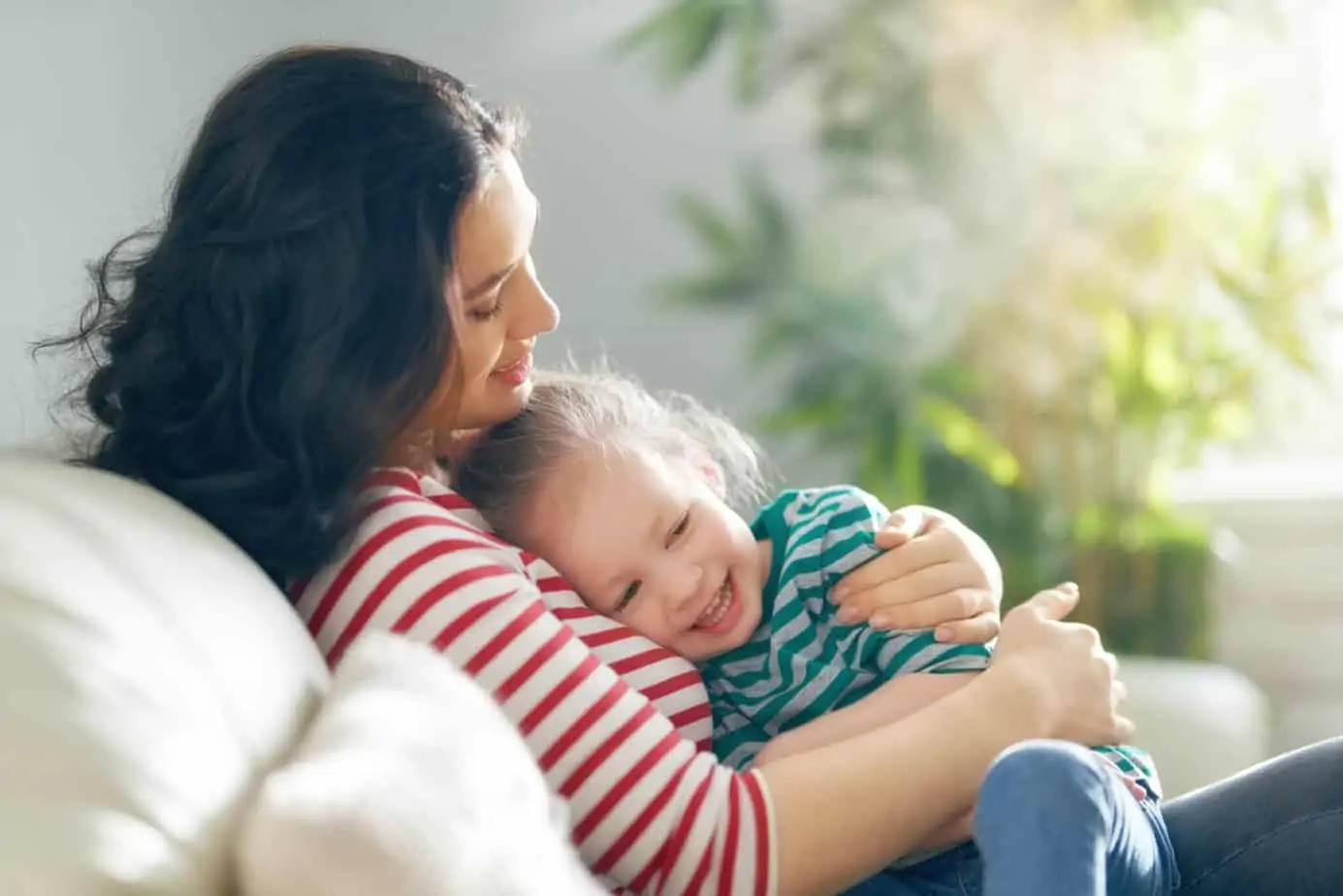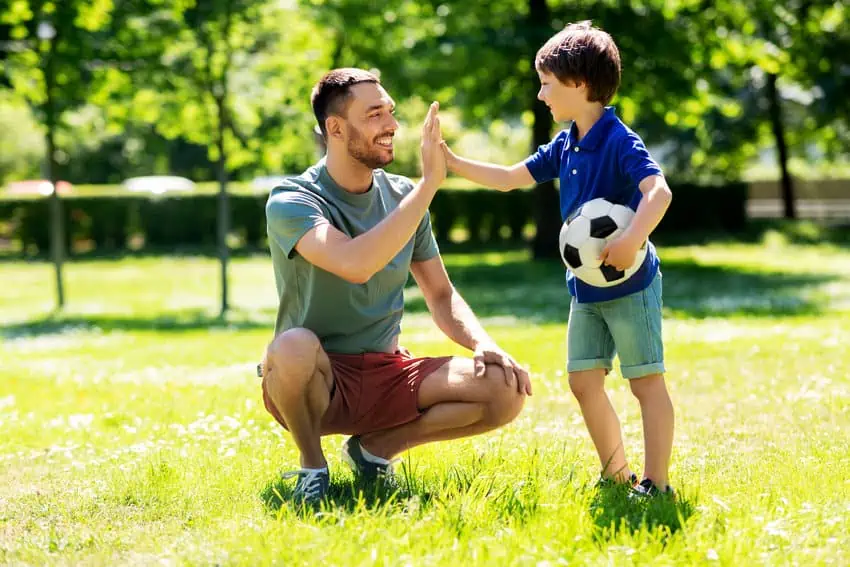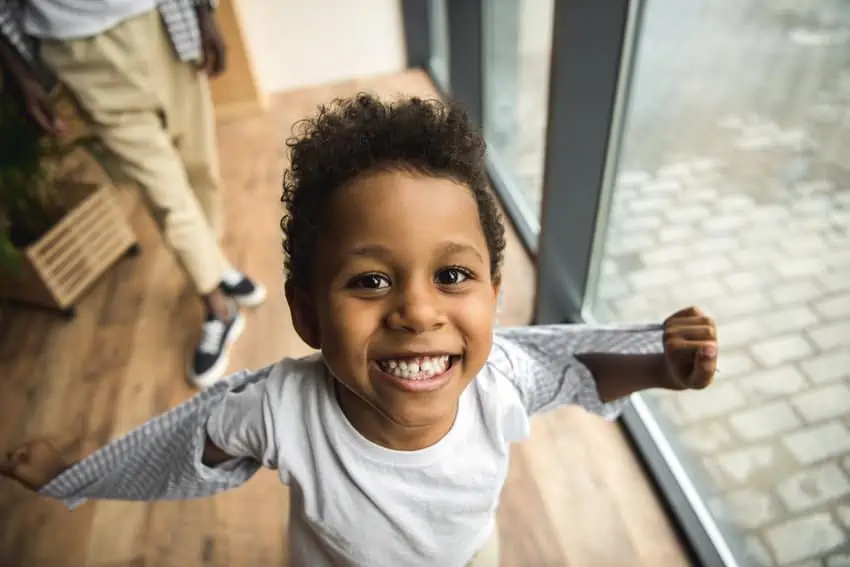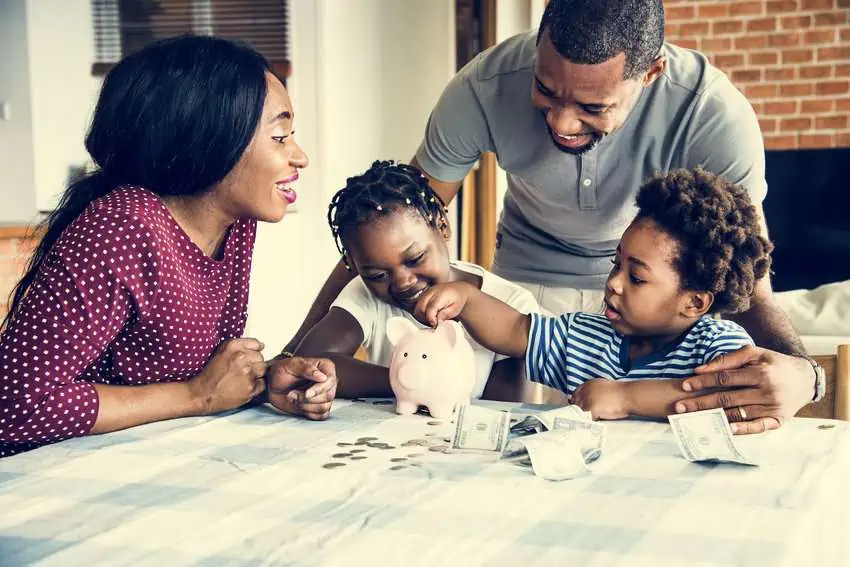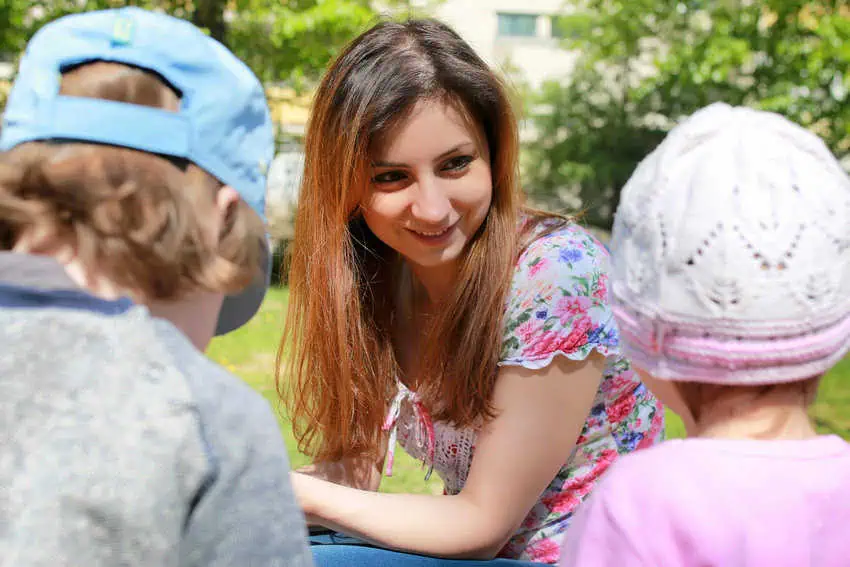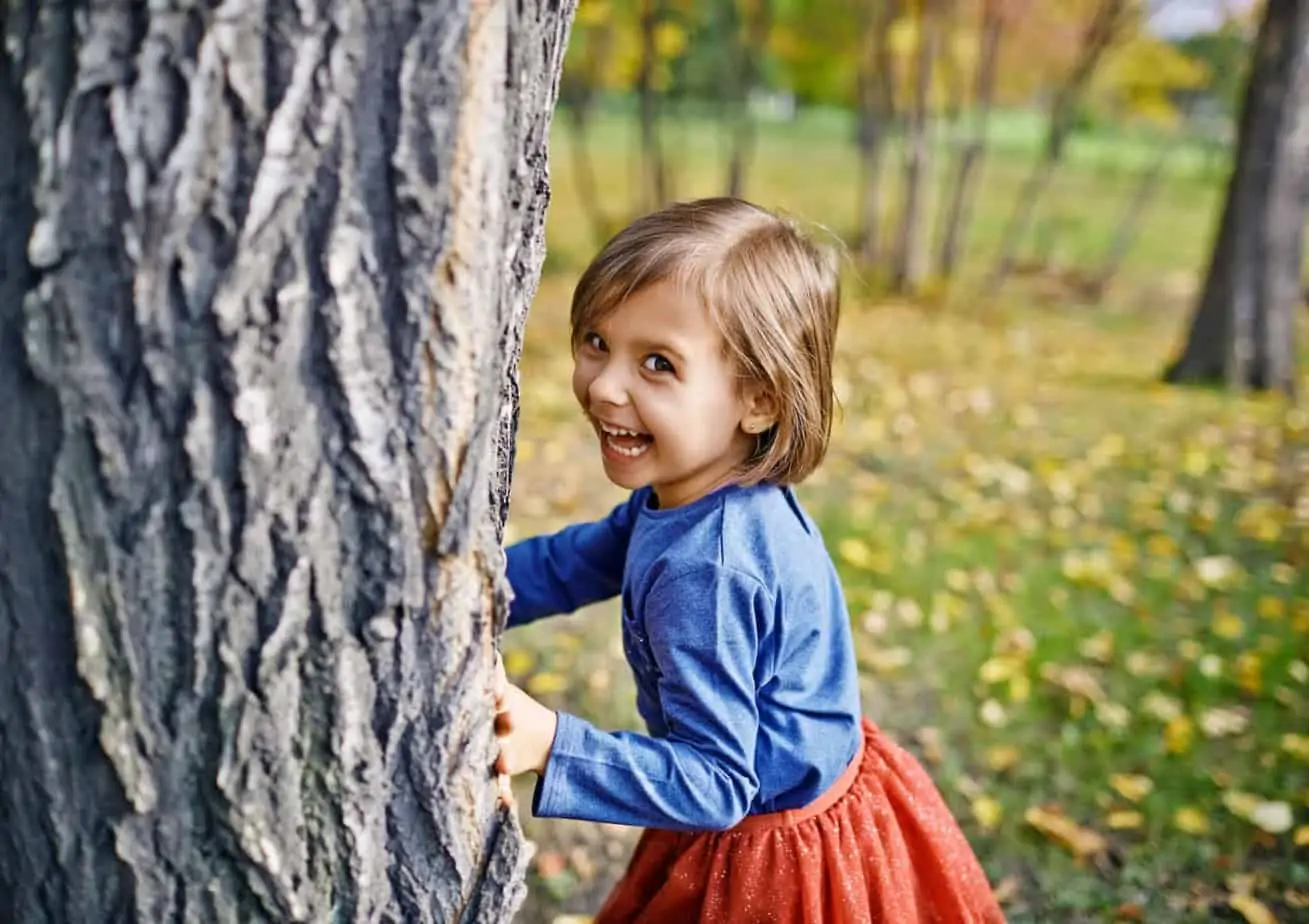How Parenting Behavior Plays a Role in Children’s Negative Behavior & Positive Behavior. How to examine your own behavior to be a role model for your kids.
IMPORTANT: This is the second part of a 4-part series: Get Kids to Listen, Put a Stop to Power Struggles and Stay Calm. If you haven’t read the first part, you can read it here.
Why Your Behavior Matters More Than Your Words
Children may not always listen to what you say, but they are always watching what you do. Every sigh, eye roll, calm redirect, or angry snap teaches them how to respond to frustration, conflict, and stress.
When parents model calm, consistency, and respect, kids learn those same skills. When parents yell, criticize, or control too tightly, kids often mirror those patterns back — at home, at school, and eventually in their adult relationships.
Here’s a truth bomb when it comes to kids not listening and parents getting frustrated:
It’s never just a kid problem.
Trust me, I know how easy it is (or how much sometimes you might want to) redirect the blame instead of taking responsibility for your actions, but real change doesn’t start until you understand this one important fact.
If you aren’t aware of your own triggers, you can’t stop triggering your child.
So, what do I mean by that?
Our personalities can fuel power struggles and bring out certain behaviors in our kids we don’t like. Yep, we easily add fuel to the fire.
I’ll be the first to admit my personality causes me to butt heads with my son and can make situations worse. I like being in control and my stubbornness gets me into power struggles with him.
When I want things MY way, and don’t stop to to listen to his suggestions or take full stock of the situation, it makes things 10x worse.
It’s no surprise, when I’m too controlling, his natural reaction is to push back and we go from 1 to 100 real quick.
A child who can’t flee, will always fight back.
That’s where power struggles, backtalk, tantrums, meltdowns, and all the unpleasant behavior parents dislike begins.
How Do You Know What Parenting Style You Have?
This article will help you figure out (and has a link to a quiz if you want to take it a step further) what parenting style you are, and how to adjust your approach for more cooperation and respect from your kids.
Then…
Once you can see how your parenting style affects your relationship with your children, you can also start figuring out what your triggers are causing you to get upset, lose your patience, or even yell.
Some of the most common triggers to parenting frustrations are everyday occurrences.
While triggers on their own, seem insignificant in the grand scheme of things, when they happen daily, tend to get under your skin more easily.
Examples of Everyday Triggers:
- When your kids are fighting with each other over unimportant things like who get’s to have the first bowl at breakfast, or sit next to you while you read a book to them.
- You’re perpetually running 10 minutes late every morning.
- Asking for a snack 30 times during the day after you’ve already made breakfast, lunch and are about to start dinner.
- Having to repeat yourself 37 times before your kids put their shoes in the shoe bin, not just in the 3-foot space in front of the shoe bin.
- Or when your walk through the door and can’t see the floor because it’s covered in toys, couch cushions and smashed cheerios and your entire life suddenly feels like a mess because of what’s in front of you.
- Loud noise and rough housing every night after a long day and your patience is already razor-thin.
- When you close their door and are in the home-stretch to watching your show on Netflix, when you hear your child ask for one more book, more water, another snuggle…
12 Ways Your Parenting Behavior Shapes Your Child’s Behavior
1) Co-Regulate Instead of Co-Escalate
When kids are melting down, your nervous system sets the tone. If you ramp up, they will too. If you slow down, they begin to match your pace. That’s co-regulation: teaching kids how to calm down by being calm yourself.
Why it works: Kids borrow your calm until they can regulate on their own.
Examples:
-
Child is screaming over a toy: You sit nearby, lower your voice, and say, “I’m here. We’ll figure it out when you’re ready.”
-
Teen slams the door: You stay put, wait five minutes, then knock calmly and say, “I want to talk when you’re ready.”
-
Sibling fight: Instead of yelling, you separate them with steady directions, “You go to the couch, you to the kitchen—I’ll check in with both of you.”
-
Toddler tantrum in public: Instead of snapping, you kneel and breathe out loud until they start copying you.
2) Use Attention Strategically
Kids repeat whatever gets the most attention. If whining, fighting, or door-slamming always earns your full energy, you’re reinforcing it. If you highlight cooperation, kindness, and effort, those behaviors grow.
Why it works: Attention is currency. Spend it where you want growth.
Examples:
-
Child sets the table without being asked: “Thanks for helping—makes dinner smoother for all of us.”
-
Teen finishes homework before gaming: “I noticed you stuck with it—good focus.”
-
Child whines: You ignore until they switch tone, then respond right away.
-
Kid shares with a sibling: You stop and say, “That was generous—you made your brother smile.”
3) Be Clear – Then Consistent
Mixed messages confuse kids. They’ll test boundaries endlessly if rules shift with your mood. Clear, simple expectations + consistent follow-through give kids security and reduce misbehavior.
Why it works: Predictability lowers anxiety and power struggles.
Examples:
-
“Homework before screens” applies every weekday—no exceptions.
-
Shoes left in the hallway = they go in the closet until tomorrow.
-
Talking back = pause the conversation until respect returns.
-
Bedtime routine = same steps, same order, same time.
4) Loosen Your Grip on Control
Control creates resistance. Kids need a sense of ownership to build responsibility. When parents dictate every detail, kids push back harder. Giving choices within boundaries reduces battles and builds cooperation.
Why it works: Shared power lowers defiance and raises responsibility.
Examples:
-
“Your room needs a reset today—before dinner or after?”
-
“Brush teeth now or after pajamas?”
-
“Do you want to unload or reload the dishwasher?”
-
“Two pages of reading—pick the book.”
5) Repair After You Lose It
Parents yell. It happens. What matters is what comes next. Repairing teaches your child that relationships can survive mistakes. A quick apology shows accountability and models respect.
Why it works: Repair rebuilds trust and keeps the relationship safe.
Examples:
-
After yelling: “I’m sorry I raised my voice. I was frustrated, and I’ll handle it better next time.”
-
After snapping: “That wasn’t fair. Let’s try that conversation again.”
-
After overreacting: “I let stress take over. That’s on me.”
-
Reconnect with a hug, game, or laugh to seal the repair.
6) Name Feelings – Coaching Skills
Kids can’t manage emotions they don’t have words for. Labeling feelings teaches them emotional literacy and helps them calm down faster.
Why it works: Naming emotions reduces intensity and builds vocabulary for self-control.
Examples:
-
“You’re disappointed the playdate ended—that’s a tough feeling.”
-
“Looks like you’re frustrated with homework—let’s break it into steps.”
-
“You’re angry your sister grabbed the toy—want to stomp it out or ask for a turn?”
-
“I can tell you’re nervous about the test—want me to quiz you?”
7) Protect Routines and Rhythms
Predictability reduces chaos. Transitions like mornings, after school, and bedtime run smoother with routines. Kids thrive when they know what’s coming next.
Why it works: Structure reduces pushback and misbehavior.
Examples:
-
Morning checklist on the fridge with pictures.
-
After school: snack, homework, playtime.
-
Bedtime: bath, story, lights out—same order nightly.
-
Weekend rhythm: chores first, fun second.
8) Watch Your Labels
Children live up—or down—to the labels they’re given. “Lazy,” “bossy,” or “wild” become self-fulfilling. Shift to describing behaviors, not identity.
Why it works: Labels stick; focusing on actions keeps identity positive.
Examples:
-
Swap “You’re messy” for “Your clothes belong in the hamper.”
-
Swap “You’re bossy” for “Try that request with a kinder tone.”
-
Swap “You’re lazy” for “Looks like you need a starting boost—want help with the first step?”
-
Swap “You’re a bad kid” for “That was a bad choice—let’s talk about better ones.”
9) Reinforce Effort and Process
Praising effort teaches kids to value persistence and resilience, not just outcomes. Process praise (“You worked hard”) builds grit better than outcome praise (“You’re smart”).
Why it works: Encourages growth mindset and reduces fear of failure.
Examples:
-
“You kept trying that puzzle even when it was hard—that’s determination.”
-
“You practiced every day—that’s why you improved.”
-
“I noticed you stayed calm during that game—you handled frustration well.”
-
“You studied steadily all week—that effort paid off.”
10) Model Problem-Solving Out Loud
Kids learn problem-solving by watching you do it. Narrate your process—identify the problem, brainstorm, choose a solution, and reflect.
Why it works: Shows kids that problems are solvable, not crises.
Examples:
-
“We both want the table clear. You want five more minutes. Timer for five, then we’ll clean.”
-
“Dinner’s late—should we snack now or push bedtime back?”
-
“You need supplies for the project. Let’s list what we have and what we need.”
-
“The toy broke—should we fix it, replace it, or make something new?”
11) Mind Your Non-Verbals
Kids read tone, face, and body language before words. Tension in your jaw or crossed arms can speak louder than anything you say.
Why it works: Non-verbal cues set the emotional climate.
Examples:
-
Relax shoulders before speaking.
-
Kneel to eye level instead of towering over.
-
Use soft eyes instead of sharp stares.
-
Gentle hand on their shoulder instead of pointing finger.
12) Mind Your Stress Load
Kids pick up on household stress. If you’re constantly maxed out, they often mirror the tension with bigger behaviors. Lowering your stress helps everyone.
Why it works: Calm parent = calmer child.
Examples:
-
Take a 10-minute walk after dinner.
-
Pause for a breathing break before helping with homework.
-
Build “quiet time” into the day—for you and for them.
-
Tag team with your partner when you feel your patience slipping.
Take Action: Parenting Behavior Overhaul
Over the next week, figure out how your personality and parenting style plays a role in your relationship with your kids and ultimately, influences their behavior. Then you’ll be able to find areas to work on.
Also, start taking stock of the times when your kids get on your nerves or you react in a way you don’t like… what was going on at the time, how were you feeling, what’s at the root of your behavior?
Make little notes so you can figure all this out. Once you find your triggers, and the root, you can test out solutions to triggers so they don’t keep coming up time and time again.
Your behavior is the blueprint for your child’s. They’ll follow your lead whether you like it or not. That’s both the challenge and the gift of parenting — because every calm breath, respectful word, and consistent follow-through becomes part of who they grow up to be.
FAQs About How Parenting Behavior Influences Kids
Parenting behavior influences a child’s behavior by modeling how to handle emotions, set boundaries, and solve problems—kids mirror what they see, so calm, consistent, respectful parenting leads to positive behavior, while yelling, criticism, and inconsistency often lead to negative behavior.
How does parenting behavior influence a child’s development?
- Children learn more from watching what parents do than from what parents say. When parents model calm, consistency, respect, and problem-solving, kids mirror those skills. When parents react with yelling, criticism, or harsh control, kids often internalize those same patterns, which can affect self-esteem, emotional regulation, and behavior long-term.
What are examples of positive parenting behaviors?
- Positive parenting behaviors include staying calm during conflict, setting clear expectations, following through consistently, using encouragement, and repairing after you make mistakes. These behaviors teach kids responsibility, respect, and self-control without damaging the parent-child relationship.
What are examples of negative parenting behaviors?
- Negative parenting behaviors include yelling, labeling kids with negative traits (“lazy,” “bad”), inconsistent follow-through, using punishment without teaching, or trying to control every detail. These behaviors often lead to power struggles, increased misbehavior, and less trust between parent and child.
Is positive reinforcement better than punishment?
- Yes. Positive reinforcement focuses on noticing and rewarding the behaviors you want to see more of. Punishment, on the other hand, often focuses only on what went wrong—without teaching what to do instead. Research shows kids respond better long-term when parents encourage and guide rather than punish harshly.
What should I do if I yelled at my child?
- Repair the moment. Apologize directly: “I’m sorry I yelled. I was frustrated, but I should have handled it differently.” Explain without blaming: “I let stress get the best of me, and I’m working on that.” Then reconnect with a hug, shared activity, or moment of calm. This models accountability and shows your child that relationships can heal after conflict.
Next: Read Part 3 of this series: Getting Kids to Listen without Yelling, Power Struggles and How to Stay Calm
More Resources to Help You with Positive Parenting:
- How Love and Parental Affection Affect Child Development
- How to Learn From Your Anger & Why Anger Isn’t a Bad Thing
- Get Your Home in Order to be a Calm & Happy Mom
- 5-Steps to Control Your Anger with Kids & Stay Calm
- The Brain Science Behind Outbursts (& How to Calm Down Kids)
- Why Aren’t My Kids Listening? 6 Secrets To Helping Kids Hear You the First Time
- How to Get Kids to Listen Without Yelling
Want even more?
Shop All Parenting Resources
Shop all of our parenting resources from self-regulation tools and managing big emotions to building self esteem and confidence. There are resources for all seasons of life!
